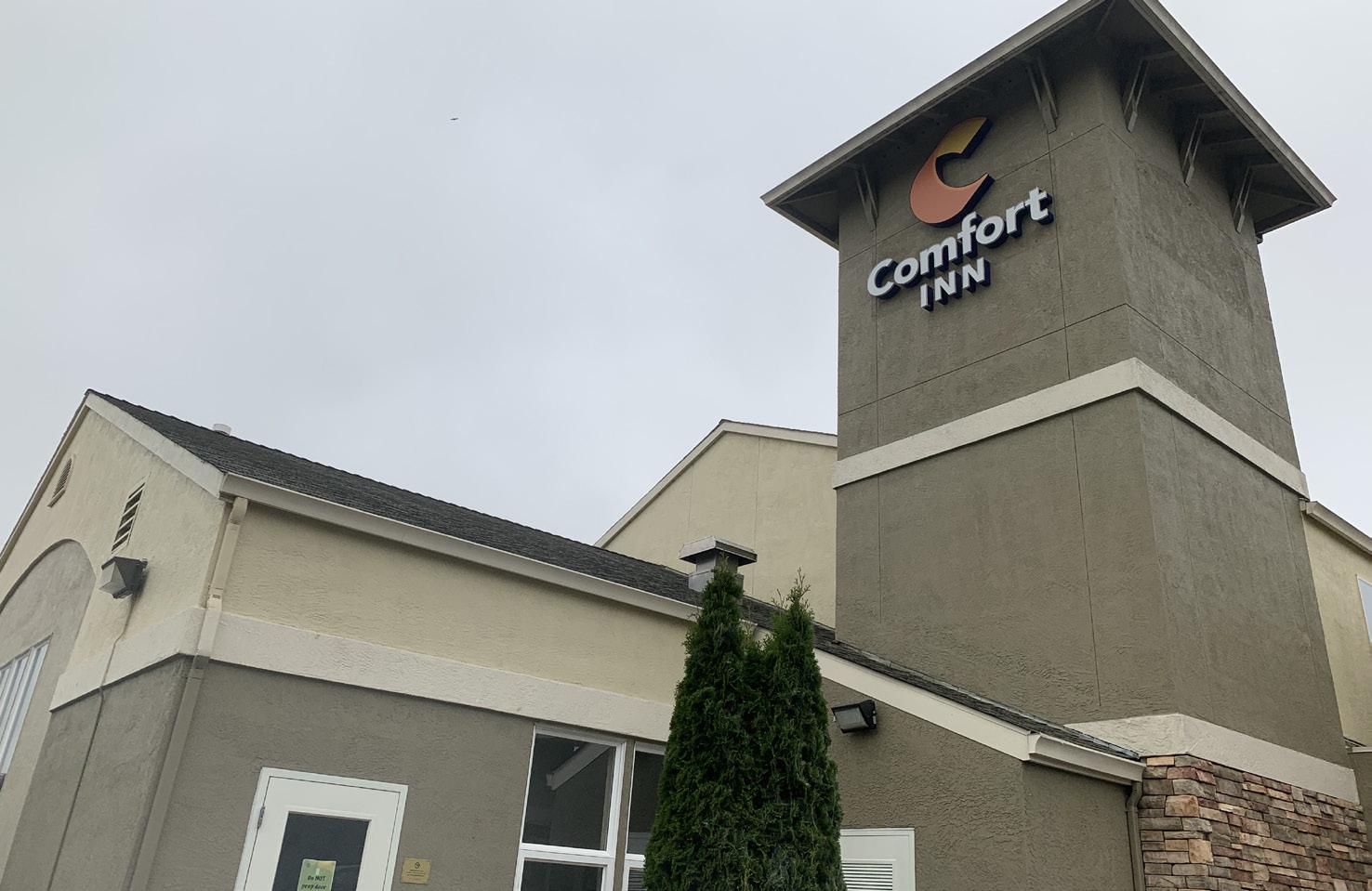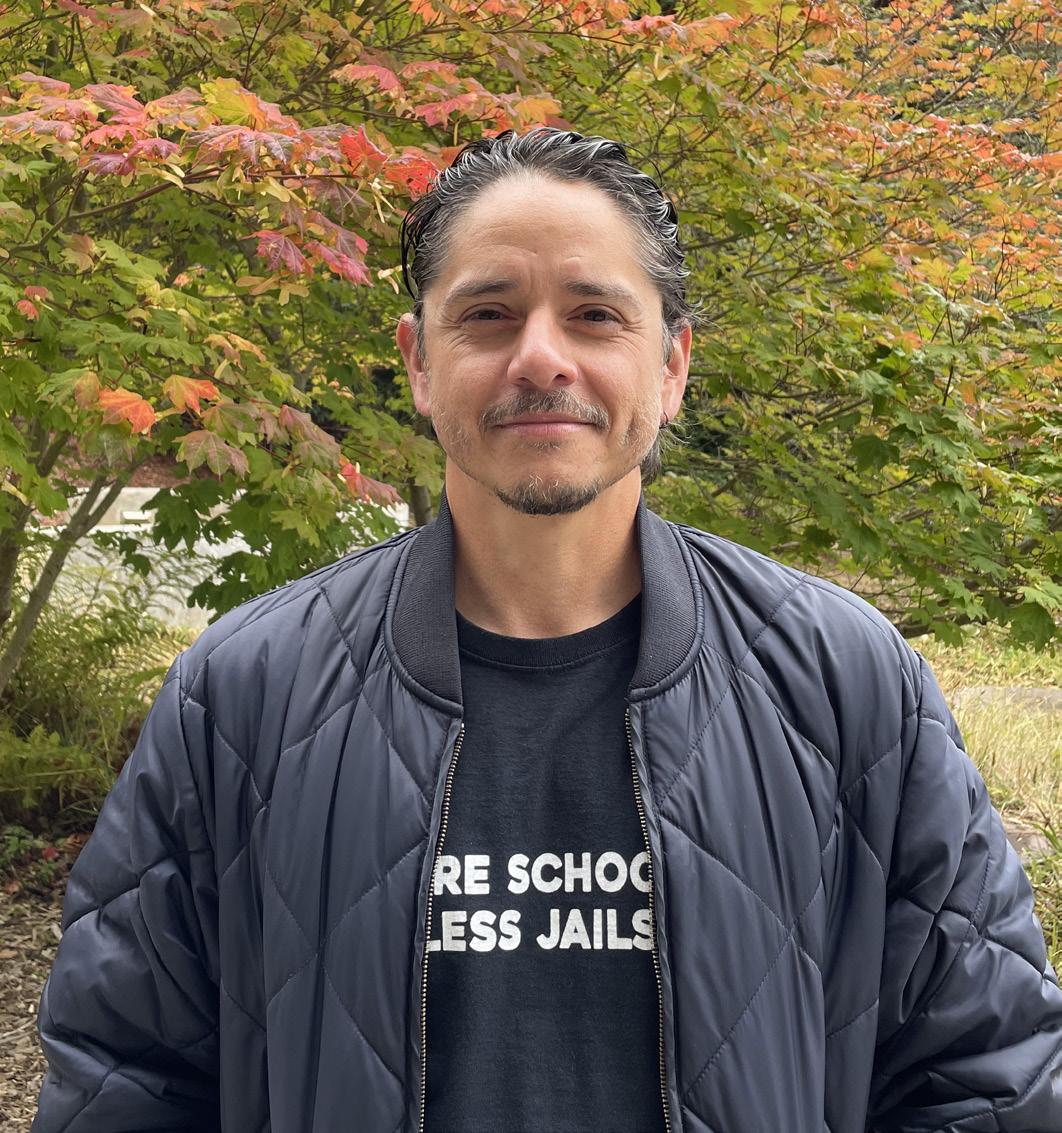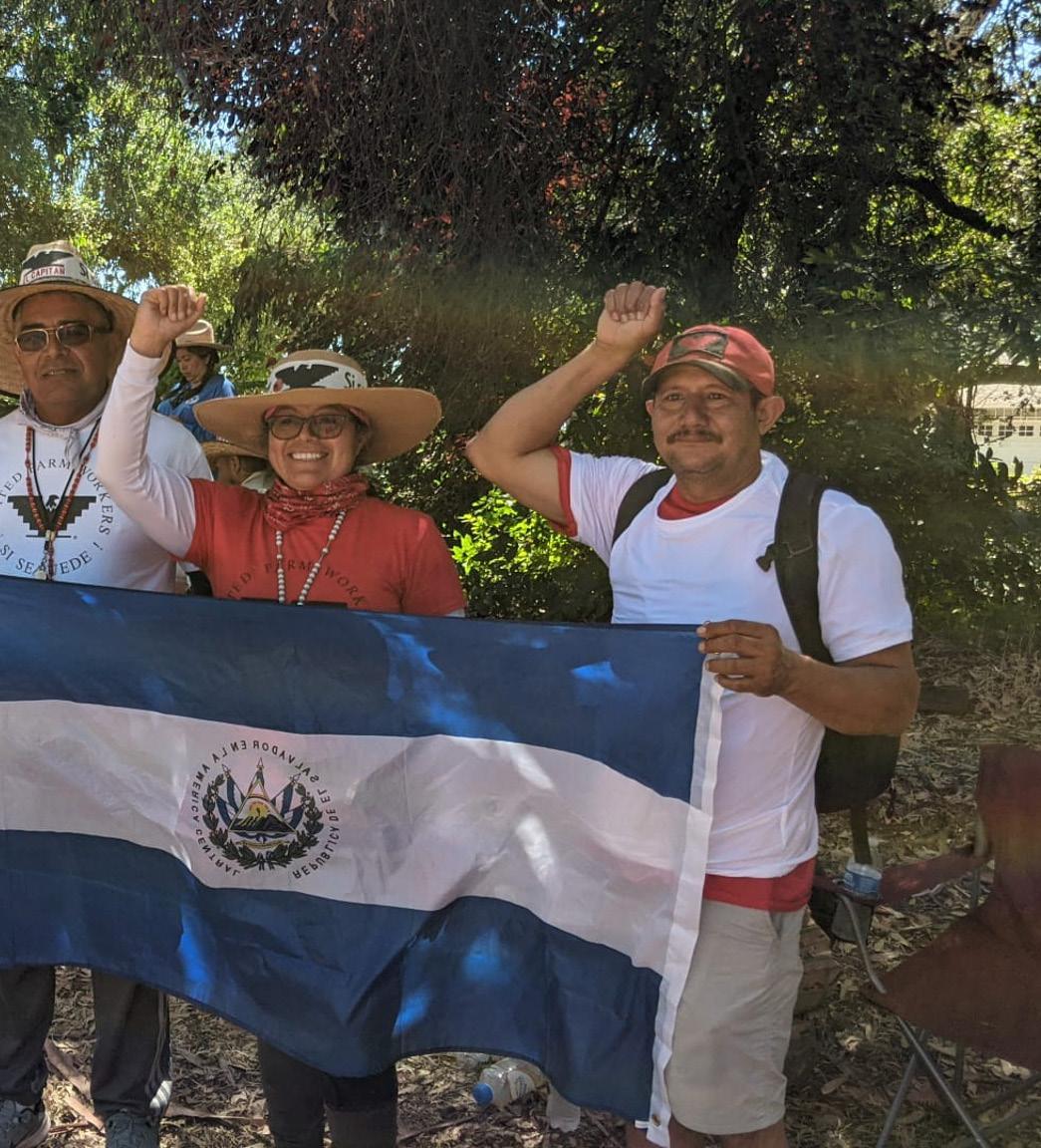
9 minute read
Details on student loan forgiveness plan
from September 2022
by El Leñador
White House's plan for student debt relief
by Angelina Ramirez Peirano
Advertisement
News Noticias
Plan de la Casa Blanca para dueda estudiantial
por Angelina Ramírez Peirano traducido por Desiree Osornio
The Biden-Harris administration and the Department of Education has approved a student loan forgiveness plan to help ease the financial burden on graduates and current students. A whitehouse.gov press release published on Aug. 24 claims that this plan could provide relief for up to 43 million borrowers.
The Student Loan Forgiveness Plan includes forgiveness for undergraduate federal loans, lower monthly loan payments, and a final extension to the current student loan payment pause. Director of Financial Aid at Cal Poly Humboldt, Peggy Metzger, explained that this plan is tentative, but more information will be coming by December of this year.
“A lot of times when new bills are passed or when new orders come from the president it's like ‘okay we’re gonna do this’ and then the folks at the Department of Education and the federal student aid office have to figure out how to make it happen,” Metzger said. “That part all still has to happen.”
Who is eligible for what?
Individuals who have qualified for a Federal Pell Grant can receive up to $20,000 of debt cancellation, while nonPell Grant recipients can only receive up to $10,000, according to the Federal Student Aid website. To be eligible to have your student loan debt forgiven, you must meet both of the following requirements: • Have had a federal student loan disbursed prior to June 30 of this year • Make less than $125,000 annually ($250,000 for married couples)
“The government knows what Pell Grant you took out. The government knows how much loan you took out, and the government through the IRS knows what your income is,” Metzger said. “So theoretically, they should be able to take all of that together and go ‘look you fit this [eligible] category’.”
Metzger explained that notices should automatically be sent in December to students and graduates if they qualify for loan forgiveness. Individuals who do not receive an eligibility letter can apply on the Federal Student Aid website, however it is still unsure how the application process will look and when it will open.
How do graduates benefit?
Graduates are able to benefit from the final loan payment pause that will last until Dec. 31. This system was implemented during the height of the COVID-19 pandemic to help ease the financial burden of paying off student loans while also facing job insecurity, according to the Federal Student Aid website.
Monthly loan payments will also become more manageable after this plan’s implementation. According to the White House press release, the Department of Education intends to, “Cut in half the amount that borrowers have to pay each month from 10 percent to 5 percent of discretionary income.” Borrowers with original loan balances below $12,000 may have their loans forgiven after 10 years of payment.
The Federal Student Aid website states that anyone making less than 225 percent of the federal poverty level (annual equivalent of minimum wage income) will not have to make monthly payments and won’t be charged interest while their payments are paused. Borrowers who do have monthly payments because they make more than minimum wage also will not accrue interest so long as they continue to make their monthly payments.
For more information visit student aid. gov or call Cal Poly Humboldt Financial Aid office at (707) 826-4321.
Graphic by Abraham Navarro
La administración Biden-Harris y el Departamento de Educación han aprobado un plan de perdón de préstamos estudiantiles para ayudar a aliviar la carga financiera de los graduados y los estudiantes actuales. Un comunicado de prensa de whitehouse.gov publicado el 24 de agosto afirma que este plan podría aliviar a hasta 43 millones de personas.
El Plan de Perdón de Préstamos Estudiantiles incluye el perdón de los préstamos federales para estudiantes, la reducción de los pagos mensuales de los préstamos y una última extensión de la pausa de los pagos actuales de los préstamos estudiantiles. La Directora de Ayuda Financiera de Cal Poly Humboldt, Peggy Metzger, explicó que este plan es provisional, pero que vendrá más información en diciembre de este año.
Muchas veces, cuando se aprueban nuevos proyectos de ley o cuando llegan nuevas órdenes del presidente, se dice "vale, vamos a hacer esto" y entonces la gente del Departamento de Educación y la oficina federal de ayuda a los estudiantes tienen que averiguar cómo hacerlo realidad", dijo Metzger. "Toda esa parte todavía tiene que ocurrir".
¿Quién puede optar a qué?
Las personas que hayan cumplido los requisitos para recibir un Pell Grant Federal pueden recibir hasta $20,000 de cancelación de la deuda, mientras que los que no son beneficiarios de Pell Grant sólo pueden recibir hasta $10,000, según el sitio web de Ayuda Estudiantil Federal. Para poder optar a la condonación de la deuda de tu préstamo estudiantil, debes cumplir los dos requisitos siguientes
Haber tenido un préstamo estudiantil federal distribuido antes del 30 de junio de este año.
Ganar menos de 125,000 dólares anuales (250,000 dólares para los matrimonios) "El gobierno sabe qué Pell Grant sacaste. El gobierno sabe qué préstamo sacaste, y el gobierno, a través del IRS, sabe cuáles son tus ingresos", dijo Metzger. "Así que, en teoría, deberían ser capaces de tomar todo eso junto y decir 'mira, entras en esta categoría [elegible]'". Metzger explicó que en diciembre deberían enviarse automáticamente avisos a los estudiantes y graduados si cumplen los requisitos para el perdón de los préstamos. Las personas que no reciban una carta de elegibilidad pueden solicitarla en el sitio web de Ayuda Federal para Estudiantes, aunque todavía no se sabe cómo será el proceso de solicitud ni cuándo se abrirá.
¿Cómo se benefician los graduados?
Los graduados pueden beneficiarse de la pausa en el pago del préstamo final que durará hasta el 31 de diciembre. Este siste-
Las personas que hayan ma se puso en marcha durante el momento cumplido los requisitos para cumbre de la pandemia del COVID-19 recibir un Pell Grant Federal para ayudar a aliviar la carga financiera pueden recibir hasta $20,000 de que supone pagar los préstamos estudiancancelación de la deuda..." tiles al tiempo que se afronta la inseguridad laboral, según el sitio —Ayuda Estudiantil Federal web de la Ayuda Federal para Estudiantes. Los pagos mensuales de los préstamos también serán más manejables tras la implementación de este plan. Según el comunicado de prensa de la Casa Blanca, el Departamento de Educación pretende "reducir a la mitad la cantidad que los prestatarios tienen que pagar cada mes, del 10% al 5% de los ingresos discrecionales". Los prestatarios con saldos de préstamos originales inferiores a $12,000 pueden obtener la condonación de sus préstamos después de 10 años de pago. El sitio web de la Ayuda Federal para Estudiantes afirma que cualquier persona que gane menos del 225 por ciento del nivel federal de pobreza (el equivalente anual a los ingresos del salario mínimo) no tendrá que hacer pagos mensuales y no se le cobrarán intereses mientras sus pagos estén en pausa. Los prestatarios que sí tienen que hacer pagos mensuales porque ganan más del salario mínimo tampoco acumularán intereses mientras sigan haciendo sus pagos mensuales. Para más información, visita studentaid.gov o llama a la oficina de Ayuda Financiera de Cal Poly Humboldt al (707) 826-4321.
United Farm Workers march to the capital
by Danielle Hendrickson


Left photo, UFW President, Teresa Romero leads a pack of marchers. Farmworkers and allies march in solidarity for more union rights in Date here. A vigil set up outside of the Capitol displayed in response to Gov. Gavin Newsom not signing the Assembly Bill 2183 bill. | Photos courtesy Yolanda Chacon-Serna
After braving the summer heat for 335 miles along the San Joaquin Valley, thousands of farmworkers and supporters concluded the United Farm Workers march to Sacramento. This journey was made in hopes that Gov. Gavin Newsom would sign Assembly Bill 2183, which would allow farmworkers to vote when and where they please, free of intimidation from management.
The march began in Delano on Aug. 3, taking a similar path Ceasar Chavez and many others took in 1966.
Yolanda Chacon-Serna, a labor organizer, began the pilgrimage on its first day. She even celebrated her birthday while passing through Stockton. Chacon-Serna drove the van that would assist the marchers. If someone was tired, had to use the bathroom, or needed refreshments, she was there to assist.
“After walking so much everyday, someone is bound to get injured,” Chacon-Serna said. “If someone twists their ankle or is overheated, I go and pick them up. They’re doing so much, I want to help in any way I can.”
For the past 30 years she has worked as a labor organizer. Her mother was a farmworker and activist for UFW.
“I am the seed that was grown from the struggle of my people,” Chacon-Serna said. “ We must continue so our children have opportunities.”
Jesus Garcia is a fellow marcher who was there for most of the duration of the march. He comes from a family of farmworkers.
“We're not asking, we're demanding justice for farm workers,” Garcia said. “Government and politicians are no longer dealing with farmers in the field. They’re also dealing with their children and grandchildren.”
The proposed bill would extend all farmworkers the right to vote at home, similar to how Californian’s vote in elections. Currently the governor has not agreed to sign Bill 2183 with how it stands. Newsom opposes the current bill due to lack of provisions in an untested mail-in election.
Chacon-Serna explained how this disappointed many of the farmworkers, as they supported Newsom during the time of potentially being recalled from office.
“He utilized the vote by mail, farmworkers supported him and stood behind him,” Chacon-Serna said. “They feed the world. Farmworkers rights are human rights.”
In response to the governor not passing the bill, protestors have set up a vigil outside of the Capitol until the bill is signed. Vigil’s have also been set up in Los Angeles, San Francisco and Fresno.
Farm workers have had to continue working in extraneous conditions such as extreme heat waves, COVID-19 and wildfires the past few years. Additionally, they are more susceptible to various health problems due to the chemicals used in the farming process.
Oscar Mogollon, a Cal Poly Humboldt alumni, is the marketing manager and community peacekeeper at the North Coast Growers Association. The organization helps put on the farmers markets in the county and runs food programs that connect farmers with excess food to those who need it.
He speaks of the harsh field conditions and lack of respect that workers face. Mogollon believes this march is a stride in the right direction for farmworker rights.
“The march indicates there’s lots of moving pieces in the work, and it still needs solidarity,” Mogollon said. “Problems are still on the rise, farmer suicide higher than many other professions. These skilled farm workers are struggling in many domains. They unfortunately don’t get the support when they need it.”





